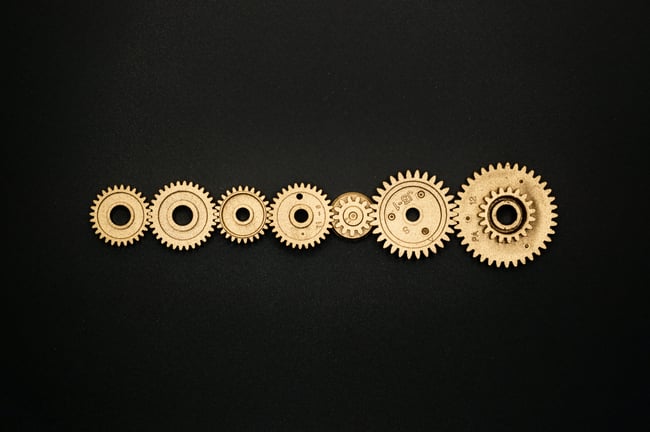Achieving overall efficiency within your manufacturing operation is a key goal among many operations managers. Reducing waste enables manufacturers to save money and take production up a notch.

How can production facilities achieve this? Lean manufacturing can be especially helpful to cut costs by removing waste within the organization.
Lean manufacturing is characterized by waste reduction and effective management, in which all team members are engaged to locate ways to increase efficiency and productivity. This type of manufacturing has become one of the most popular manufacturing methods and has enabled facilities to easily reduce waste. Having said that, what exactly are some of the ways that lean manufacturing can decrease waste? In this blog, we will discuss four methods in which lean manufacturing can help remove wasteful practices.
Decreasing Waste Through Lean Manufacturing: 4 Methods
Decreasing or eliminating waste within your manufacturing operation is difficult, but with lean methodology there are methods to to effectively conduct this process. The following four methods can help you achieve your goals:
1. Reduce Excess Inventory and Overproduction
In a lean manufacturing model, any inventory that is not directly required to fulfill specific customers orders is considered a potential waste. When too many products are produced, you run the risk of them sitting in inventory and losing their value if the demand foe them is not high enough. Comparing existing inventory with sales data before executing production can decrease the volume of excess inventory. It also may be beneficial to reset production processes to manufacture only sufficient inventory to meet short-term sales goals. If it is possible, adjust the production process to manufacture product based on customer demand, rather than on maintaining excess inventory in the warehouse.
2. Reduce Transport-Related Waste
There is no question that the transportation process can be a substantial source of waste. Although transportation is important to get your products delivered on time, it adds absolutely no value to the product. This is why it is important to locate the most advantageous and efficient route. Ultimately, this aids in eliminating the need to rush orders to compensate for any poor planning. Transportation processes should be aligned with customer service and inventory strategies so that way it ensures that the entire process runs smoothly and you meet customer expectations.
3. Reduce Unnecessary Motion
Labor resources represent one of the biggest costs in a manufacturing facility. Overproduction reduction can help reduce labor costs by eliminating the unnecessary movement of goods. If your facility prioritizes sufficient quantities of product to manufacture to satisfy customer demand, then employees aren’t needed to move excess in and out of inventory. Unnecessary labor costs are also able to be eliminated with adequate project planning to ensure equipment utilization and usage times are accurately estimated. Ultimately, this will decrease the time employees spend waiting for equipment.
4. Reduce Over-Processing Waste
Waste pertaining to over-processing happens when extra work is required to correct any issues that would not have occurred if the proper process had been in place. When following lean principles, the process is analyzed and tracked individually, with considerable attention paid to determining whether they work adequately in sequence. After all is said and done, they are then refined to close gaps and eliminate any unnecessary steps within the production process.
With lean manufacturing techniques, you can easily reduce waste and costs within your organization. These four methods can aid in the elimination of some of the seven types of wastes defined by lean manufacturing. Utilization of these methods are a must when considering methods to reduce waste within your operation.
The shift to PlanetTogether APS is saving us about 15 percent in inventory overhead and about 20 percent in overtime labor expenses. We’re not building equipment to stock any longer — we’re building to ship.
BRUCE HAYS, DIRECTOR OF MANUFACTURING, J&J SYNTHES
An Advanced Planning and Scheduling Software (APS) is a visual scheduling software that provides thorough insight into your supply chain. These systems help locate bottlenecks and constraints within your production that are keeping your production process from reaching maximum efficiency. As manufacturers are searching for ways to increase efficiency within their operation, APS has become the solution. APS has become a crucial component within manufacturing facilities and has allowed manufacturers to take their production up a notch with ease.
Advanced Planning and Scheduling Software
Advanced Planning and Scheduling (APS) software has become a must for modern-day manufacturing operations due to customer demand for increased product mix and fast delivery combined with downward cost pressures. APS can be quickly integrated with a ERP/MRP software to fill gaps where these system lack planning and scheduling flexibility and accuracy. Advanced Planning and Scheduling (APS) helps planners save time while providing greater agility in updating ever-changing priorities, production schedules, and inventory plans.
With PlanetTogether you can:
- Create optimized schedules balancing production efficiency and delivery performance
- Maximize output on bottleneck resources to increase revenue
- Synchronize supply with demand to reduce inventories
- Provide company-wide visibility to capacity
- Enable scenario data-driven decision making
Implementation of Advanced Planning and Scheduling (APS) software will take your manufacturing operations to the next level of production efficiency, taking advantage of the operational data you already have in your ERP.
Related Lean Manufacturing Video
APS Resources